NMEA okays Signal K, a milestone in marine electronics?
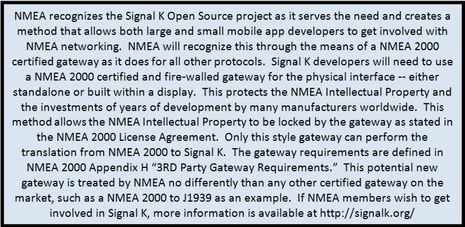 Wow! Today the National Marine Electronics Association — also known as NMEA, or IMEA for its International reincarnation — announced recognition of the Signal K open source marine data project. It’s clearly not an endorsement, but it does provide clear methods to gateway NMEA 2000 boat data to the Internet-friendly universal marine data model that Signal K is about. And that’s plenty good enough, I think. In fact, as the title above wonders, this may turn out to be a very big deal. I also think it marks a nice evolution for NMEA. Though criticism of this trade and standards organization from outside the small world of hardcore marine electronics has largely been unfair, NMEA could do better fitting into the much bigger and faster-moving data/app universe, and now they’re trying harder…
Wow! Today the National Marine Electronics Association — also known as NMEA, or IMEA for its International reincarnation — announced recognition of the Signal K open source marine data project. It’s clearly not an endorsement, but it does provide clear methods to gateway NMEA 2000 boat data to the Internet-friendly universal marine data model that Signal K is about. And that’s plenty good enough, I think. In fact, as the title above wonders, this may turn out to be a very big deal. I also think it marks a nice evolution for NMEA. Though criticism of this trade and standards organization from outside the small world of hardcore marine electronics has largely been unfair, NMEA could do better fitting into the much bigger and faster-moving data/app universe, and now they’re trying harder…
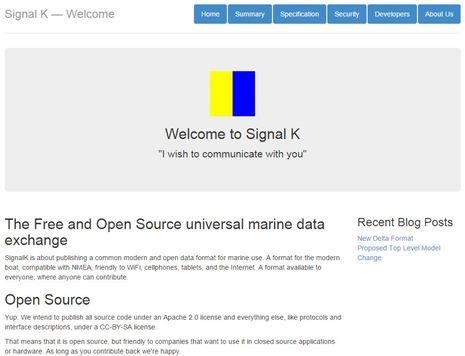 So what is Signal K? Well, right now it’s an international crew of sailor/geeks with a common vision of what can be done with boat data and the Internet and how to do it. They also seem to have a wry sense of humor, given that the project name references the signal flag Kilo, which was used not so long ago to indicate that you wanted to talk with another vessel by hand signals, megaphone, or possibly Morse Code blinked out with a oil lamp. Signal K aims to organize boat data so it can be easily shared vessel-to-vessel (and vessel-to-shore) in nearly infinite depth. Note, too, that Signal K is using an open source model that is friendly to both individual developers who would like to tweak the code for their own boat’s super system and to commercial developers who’d like to package it into finished products for the rest of us.
So what is Signal K? Well, right now it’s an international crew of sailor/geeks with a common vision of what can be done with boat data and the Internet and how to do it. They also seem to have a wry sense of humor, given that the project name references the signal flag Kilo, which was used not so long ago to indicate that you wanted to talk with another vessel by hand signals, megaphone, or possibly Morse Code blinked out with a oil lamp. Signal K aims to organize boat data so it can be easily shared vessel-to-vessel (and vessel-to-shore) in nearly infinite depth. Note, too, that Signal K is using an open source model that is friendly to both individual developers who would like to tweak the code for their own boat’s super system and to commercial developers who’d like to package it into finished products for the rest of us.
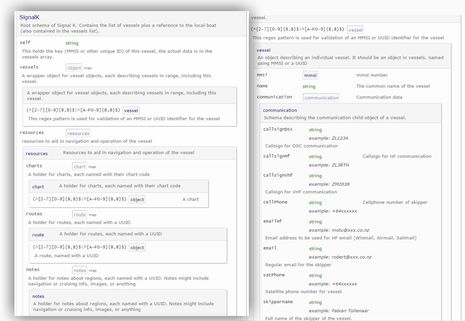 If you drill into the Signal K specification page like I did above, you can see the big thinking going on. I’d love, for instance, to have my name, boat name, MMSI, radio call signs, sat phone #, cell #, email etc. all in a format that I could easily share with some of the boaters I’ve met on my trip north (and at least a subset of that info to marinas, divers, etc.). The Ranting Installer Bill Bishop shared his major Signal K enthusiasm on Panbo last November, and here are some recent (slightly edited down) thoughts from NZ team member Rob Huitema:
If you drill into the Signal K specification page like I did above, you can see the big thinking going on. I’d love, for instance, to have my name, boat name, MMSI, radio call signs, sat phone #, cell #, email etc. all in a format that I could easily share with some of the boaters I’ve met on my trip north (and at least a subset of that info to marinas, divers, etc.). The Ranting Installer Bill Bishop shared his major Signal K enthusiasm on Panbo last November, and here are some recent (slightly edited down) thoughts from NZ team member Rob Huitema:
Remember the time before the internet?…Well, boats are still like that. What made the internet possible is common protocols – SMTP (mail), HTTP (web), all running over TCP/IP (the transport system). So, while all browsers are different, they all understand HTTP. It’s the common protocols that make it possible to mix and match different software in a practical way. It enabled communication and that’s why the internet changed the world, just as the phone did earlier.
While NMEA is a good solution onboard via cables, it was never designed to provide WiFi, or wider communication with the internet, other boats, or arbitrary services that we encounter every day now (governmental, business, social). There is no common marine protocol for these services, nor is there a standard way to transfer data from one vessel to another, or to a shore station, or over the internet. And that wider communications needs security, which was never really considered onboard. It’s the same as the early PCs.
So Signal K provides that missing communication standard – it means that the marine equipment you use in the future won’t be limited to the NMEA2000 cable. It will be accessible via Bluetooth, or WIFI, or over the internet without expensive custom boxes and special software.
It opens up marine data access so that app developers can easily build apps for tablets and phones, which will lead to a lot of really interesting new stuff. It helps crowdsourced services too and enables a whole new area of shared data from boats – race coordination and tracking, vessel performance, cruising rallies, etc.
While many of these things are possible now, they are only possible with custom gear and software, which then needs to be the same on every boat. So let’s look at some examples of a Signal K world:
* When I go sailing my friends’ boats show on my chartplotter. We decide to meet at spot x, with a tricky entrance. I have a stored route into the bay, I select it and drop it on their vessel icons on my chartplotter. It pops up on their chartplotter. I do the same with some cruising notes I’ve made, and the new marine reserve boundaries I have.
* For Wed night racing I import tonight’s course and briefing notes from the race committee boat just before the start. After (over a beer in the clubhouse) we review the race playback, our performance, and various tactics on my tablet.
…Like the internet, it’s going to change everything 🙂
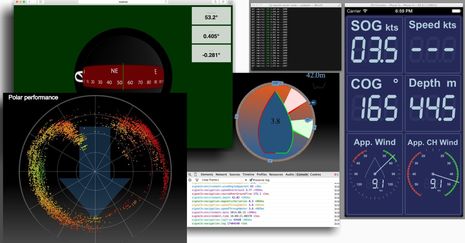 But Signal K isn’t just futuristic, and there are multiple ways it can be used. Another K developer (and occasional Panbo contributor), Kees Verruijt, answered my query thusly: “Note that the project developers have never been as pie-in-the-sky-what-can-we-do-with-IoT (Internet of Things) as it may seem. We all had an itch to scratch. I’m sure that the project will encounter some future road bumps, but I think that with the support of the NMEA this will be the ‘next gen’ platform for recreational boating data.” The first itch is getting boat data out to PC and mobile apps in a smooth way, and that will likely be its first use in the real world, as it is in the collage of Signal K demos above (note the exposed message strings in some). Of course, this is already happening on some boats — I was tickled to get the new 2.0 Nobeltec TZ app working with AIS and GPS data from Vesper Marine XB8000 yesterday — but it’s only vaguely standardized and often frustrating.
But Signal K isn’t just futuristic, and there are multiple ways it can be used. Another K developer (and occasional Panbo contributor), Kees Verruijt, answered my query thusly: “Note that the project developers have never been as pie-in-the-sky-what-can-we-do-with-IoT (Internet of Things) as it may seem. We all had an itch to scratch. I’m sure that the project will encounter some future road bumps, but I think that with the support of the NMEA this will be the ‘next gen’ platform for recreational boating data.” The first itch is getting boat data out to PC and mobile apps in a smooth way, and that will likely be its first use in the real world, as it is in the collage of Signal K demos above (note the exposed message strings in some). Of course, this is already happening on some boats — I was tickled to get the new 2.0 Nobeltec TZ app working with AIS and GPS data from Vesper Marine XB8000 yesterday — but it’s only vaguely standardized and often frustrating.
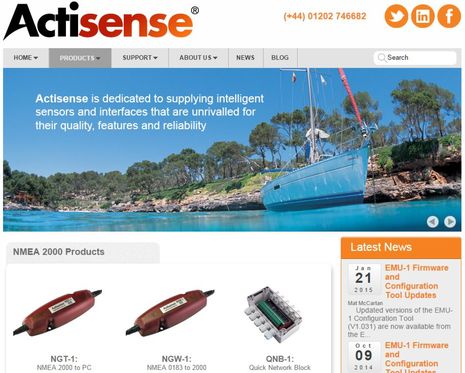 However, Signal K will remain a geek thing unless one or more qualified hardware developers come up with at least the certified gateway mentioned in the NMEA announcement (or a major MFD brand builds it into a software update). Actisense, Digital Yacht, Maretron and others are all capable, I imagine, and here’s some fairly concrete good news from Actisense managing director Phil Whitehurst:
However, Signal K will remain a geek thing unless one or more qualified hardware developers come up with at least the certified gateway mentioned in the NMEA announcement (or a major MFD brand builds it into a software update). Actisense, Digital Yacht, Maretron and others are all capable, I imagine, and here’s some fairly concrete good news from Actisense managing director Phil Whitehurst:
I have one engineer evaluating the technology. My aim would be to have a demo of some sort for METS so I can show a few interested parties something. I don’t estimate a real product until next year. I think the aims of the system are very good, but there is much groundwork still to cover. It will assist the NMEA and developers to really interact with their boat data in a much more accessible and easy way. There are so many different standards such as 0183, 2000 and various manufacturer buses that it will be great to have a single interface for web app developers to talk to. That’s why I give it full support and hope to be one of the leaders in this as the standard develops.
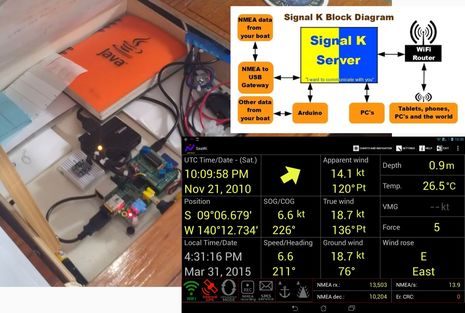 There’s more to the whole Signal K system than just NMEA data translated into an easy and much extended Web standard, though, as Bill Bishop described in his K entry. I’ve collaged his block diagram of a possible Signal K server set-up with an actual NMEA 0183 Raspberry PI system built by another sailing geek named Olivier Le Diouris. To my knowledge, Olivier doesn’t know about Signal K yet, but I’ll bet he’ll be interested.
There’s more to the whole Signal K system than just NMEA data translated into an easy and much extended Web standard, though, as Bill Bishop described in his K entry. I’ve collaged his block diagram of a possible Signal K server set-up with an actual NMEA 0183 Raspberry PI system built by another sailing geek named Olivier Le Diouris. To my knowledge, Olivier doesn’t know about Signal K yet, but I’ll bet he’ll be interested.
It’s amazing how many creative and productive boating geeks are out there — I met one in my New Bern marina — and isn’t it great that NMEA is recognizing their value? I’ve long defended NMEA’s intellectual property rights (and the right to sell its standards documents, as N2K is an open standard, not a free open source standard), but I like what may well be a new organizational attitude. I understand, for instance, that the Signal K team is invited to present at next September’s Conference in Baltimore (which I hope to attend on Gizmo, along with the nearby TrawlerFest), and check out the new DIY VHF Guide for Boater (PDF) I also circled on the screenshot below. NMEA is a complicated outfit, as I’ve tried to explain, but we should probably credit recently appointed executive director Mark Reedenaur and chairman Johnny Lindstrom for spearheading its latest moves. A big thanks to them, the rest of the NMEA, and the Signal K team for what they’ve done so far! Now what do you all think?
PS 8/6: I keep hearing good things about Signal K progress that I can’t share, but how about a Panbo cheer for Bill Bishop, who made his SK enthusiasm indelible:


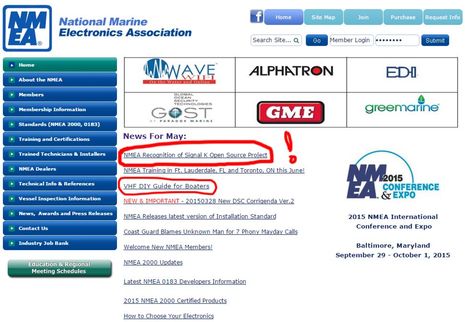
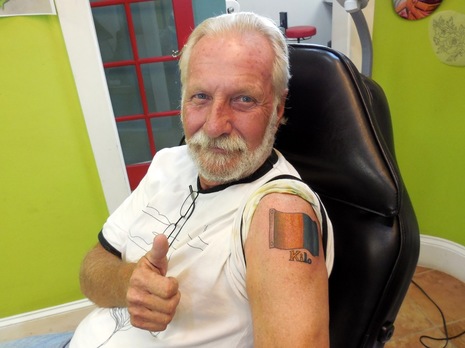



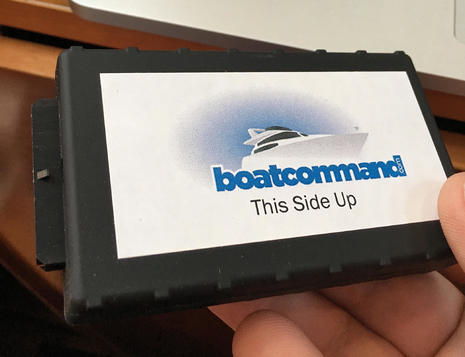








Hi Ben, thanks. I put up a set of FAQ’s about the Signal K project with additional info links on the Rant.
http://themarineinstallersrant.blogspot.com/2015/05/signal-k-faqs.html
I know nothing about Signal K. Having read Ben’s article I can envision a landmark in marine electronics is a real possibility. I would like to hear more from Panbo readers on this topic. The iPad may reach it’s potential with Signal K
Pat Harman
So if I am reading this correctly, NMEA is saying that they are okay if a licensee takes the work product of the open-source Signal K project and builds it into a closed-source device which bridges between N2K and the Signal K data format but absolutely, positively, doesn’t expose the actual translation. Is that right?
This seems to me to represent only limited progress. NMEA is making no move to unlock their absurd obfuscation of the N2K documentation. On the other hand, they are at least signaling their acknowledgement that in the future data may be consumed by devices and software **not** produced by licensees — at least once it leaves the confines of the Canbus.
The whole thing is kind of ironic given that most if not all standard PGNs have already been reverse engineered and that a Raspberry Pi and NGT-1 can today deliver an equivalent solution to that which NMEA says can “only” come from a certified gateway…
Hi Adam, it is indeed a complicated set of issues that have been thrashed out extensively here on Panbo and on other websites. NMEA’s intellectual property, is just that. They own it. Like Canbus, (Society of Automotive Engineers) or NFPA (Nation Fire Protection Assoc) there are costs to maintain and manage standards and the money has to come from some place.
So in the end Signal K is a modern day electronic Chimera. It results in everyone getting easy access to the data, which is what we all we really wanted in the first place at very reasonable costs. What is done with the data in Signal K, after it leaves the gateway is fully open source in the project. I think NMEA has chosen an excellent course to steer forward into the future, and as time goes by and with the potential success of Signal K, they may slowly start to shift to a differing model.
BTW I’m old enough to remember things both before and after NMEA. As a guy who installs marine gear daily I love the fact that I can buy the B&G wind sensor and plug it into a Garmin GMI-20, and it works out of the box. This is what NMEA provides, consistent operable standardization.
Adam, let’s note that the Actisense NGT-1 is a certified NMEA 2000 gateway, though I don’t it’s easy to get its output into a Raspberry Pi at the moment.
Having just received an email update on ActiveCaptains eboatcards, I can’t help but wonder if ActiveCaptain isn’t already heading in this direction. With it a boater will be able to watch the location of friends and other boaters (and changes to their location) on screen. They are also promising many future upgrades and added features.
Righto, Jeff. BoatLogger, Chetco SeaSmart, and others are also doing interesting things with boat data and the Cloud. But Signal K does not compete with these developers. Instead it could really help them, I think.
Great SK news: I spoke with Jeff Robbins last night and he says that Vesper Marine “loves” Signal K and very much plans to support it once it’s further developed. He says it fits perfectly with Vesper’s open API philosophy and how they’re trying to extend the utility of their AIS transponders: http://goo.gl/rPTzxi
@Bill Bishop:
Yes, I have been watching and commenting on this issue for five years. Ben used to refer to me as one of the “Ethernet crazies” who criticized the limitations of Canbus as a carriage layer for N2K. I installed a fairly complex N2K network on our Nordhavn 47 back in 2010 and then cruised with it as a liveaboard for a couple of years so I am pretty well versed in its utility and limitations.
Of course N2K is NMEA’s intellectual property, and yes it does cost something to maintain, though the very slow evolution of the spec suggests that can’t be much. (I’m being flip.) But having been in the software business for 20 years, I have seen many approaches that industry groups have taken to standards and believe that NMEA’s is among the more restrictive.
While not a criticism — what you are doing with Signal K is great — I don’t think software standards are comparable to construction standards like the NFPA fire code you cite. Indeed, I am strongly of the opinion that greater openness would likely lead to better interoperability, and fewer of the sorts of issues that Peter Hayden for one has documented well in his postings about integrating “certified” N2K hardware on his Nordhavn 60. (Example here: http://www.mvtanglewood.com/2015/02/nmea-2000-standard-committee.html)
@Ben: Yes the NGT-1 is certified, but it doesn’t output Signal K (though Actisense’s enthusiasm is very encouraging and I really admire both their hardware and their corporate position here [Vesper’s too]). My point is that NMEA’s statement seems to be hailing an innovation that happened a while ago and is already out of their control. Software is like that. 🙂
In any case, progress is progress, and I salute the Signal K team for their efforts to move the ball forward. The sunlight they have turned on marine electronics interoperability seems to have prodded NMEA into at least acknowledging the widespread desire for more access, whether or not that was Signal K’s intent.
Hi Adam, Glad you’re feeling better about how things are going but the term I used — and possibly coined — was “Ethernutters” 😉
I guess one could also interpret NMEAs statement like this:
“Don’t even think about hacking a gateway or reverse engineering our copyrighted protocol. N2K products must be licensed/certified, so you will have to pay, like everyone else. You can convert N2K data to whatever format/license you want, but the box must be certified. ”
But it’s great that they are mentioning Signal K. This is a fantastic promotion.
Ben,
I suspect Adam didn’t use the term “Ethernutters” as he was concerned you had it copyrighted as part of your standard Panbo Communication Protocol and he couldn’t use it without paying you a licensing fee. 🙂
Mark.
Surely this isn’t news: Nothing has changed. The NMEA popped up on the signal k google group in february saying they were there to help then made no further comment, not replying to any questions put to them. Anyone could previously purchase their standard and construct a closed source NMEA-2000-to-random protocol gateway and stump up the cash to get it certified. Has something changed?
This sounds more like: That stuff you’re using that’s nothing to do with us that seems to be gaining some momentum? Well carry on with that, so long as you buy our approved products to interface it with NMEA-2000….
This is a step in the right direction. Great to see some weight behind signal K. Now where is garmin et al on this issue. Garmin already has this data on Ethernet …
That’s spirit, Mike! Actually all Panbo content is under a pretty liberal Creative Commons license you can see at the bottom of the middle column. “Ethernutters” is available for most uses unless someone wants to sell Ethernutter hoodies, or some such, in which case they should contact our licensing department 😉
Keith, I don’t know how to help you understand what’s going on, and you seem content in your negativity anyway, but in case anyone is swayed by your arguments, here are a couple of points:
* The Signal K and NMEA folks communicate via many channels, like most of us, so the Google group doesn’t mean much.
* The two SK team members I emailed with were both “excited” about the NMEA announcement, which would seem to cut the legs from under Keith’s argument. And they are people who are really trying to advance open source marine electronics.
@Keith
My understanding of the fundamental difference here is that, once you have purchased a certified NMEA product which provides a SignalK interface, the data encoding on that interface will be in a publicly available format (which also happily is based on ubiquitously deployed Web tech like JSON, etc.).
This is not possible with a 2K or OneNet interface unless you’ve licensed the NMEA specs.
Sorry that I sounded negative (and note to self: “angle brackets” are treated as empty html tags here and stripped by this software so some of that last post was lost). Obviously I’m not aware of discussions which aren’t public. I don’t have an “argument”, I’m simply wondering what has changed. Prior to this announcement there was nothing preventing a company from purchasing the N2K spec and producing a closed source N2K to SignalK gateway or N2K to anything gateway. If this statement is saying that the NMEA will provide (closed source) gateway software for free, or work with developers under NDA to produce closed-source gateways which don’t require the developers to pay the full N2K fees then that’s fabulous, and I simply didn’t read it correctly. I know that Digital Yacht *are* following SignalK with interest and a boost to interoperability will stimulate innovation, allow NMEA member companies to sell a bunch of new products (good for the industry) and enhance people’s boating experience (good for consumers).
If it’s just saying (as I read it, but happy to be corrected) that any conversion of N2K to SignalK should be done by purchasing their spec as could have been done a year ago, then I’m missing what has changed.
Hi Keith, you’re right, nothing big has changed. You’re also right this could have been done a year ago. Any gateway builder could have built and certified a Signal K gateway.
The problem in the first place is no common and unencumbered developer friendly interface for N2K existed. Signal K is solving this problem.
In order for commonality to occur NMEA’s recognition was desired and needed. Not putting words into NMEA’s mouth I loosely translate this as “industry acceptance.” I personally know this acceptance couldn’t have occurred even year ago. With more recent insightful changes in NMEA’s long term view towards the future this has now happened.
Commonality, industry acceptance, a substantial market coupled with a software friendly environment to access the data makes Signal K attractive. App developers can flex their creative talents to do things that weren’t possible before. The additional of Signal K enabled Arduino’s thanks to the efforts of the Freeboard Project provides tools to do IOT applications and acquire data not anticipated by NMEA.
Inexpensive is a relative term, but I suspect without knowing for sure, that a Signal K gateway will initially not cost anymore than the currently available N2K gateways. The difference is the combination of potential market size (orders of magnitude) and competition will likely drive these costs down, maybe even sharply.
Although you’re right nothing big has changed, there have been many incremental small changes that have all made a big difference. Thanks for your thoughts.
Bill,
As a developer of open source marine software I’m very familiar with Signal K and the possible benefits to app developers and consumers from bridging proprietary NMEA protocols to something open. My question was what this NMEA press release was saying: The NMEA aren’t directly facilitating production of an N2K to SignalK bridge and are at great pains to say that SignalK is treated no differently to any other non-NMEA format. Production of such a bridge is left as a possibility to others who must pay the NMEA to do so, as has always been the case. It also seems to be a warning to small “hobbyist” manufacturers potentially producing “uncertified” N2K to SignalK bridges.
The language of the press release sounds a long way from “endorsement”, but I take your point: The mention of SignalK by name may be seen as an acknowledgement of “legitimacy” which may encourage companies like Actisense and Digital Yacht who have to date been “watching with interest” to produce a commercial bridging product which would accelerate SignalK adoption.
A couple questions related to Bill’s blog post here.
http://themarineinstallersrant.blogspot.mx/2015/05/signal-k-faqs.html#comment-form
“The first is a generic software translation module that takes NMEA 2000 PGN’s, parses the PGN’s into its individual data elements inside the NMEA certified gateway, and sends the data to the separate Signal K server. This software requires access to the NMEA standards to be functional, and will be provided free of charge to the NMEA community.”
Does this mean the SignalK team has been granted access to the 2K specs?
And “provided free” to any NMEA member or just licensees of the 2K specs?
Sparky, the Signal K team has no access to the N2K specs. This generic software, like all software Signal K writes will be open source and available to all.
A point of clarification might help. Bill, isn’t it correct, that the Signal K interface is based on a “reverse engineered” N2K set of PGN’s? The importance to me of the announcement by NMEA is that there is much less risk of NMEA charging a member of the Signal-K team with software piracy or similar which reverse engineering is seen as by many courts. One couldn’t ask for more of NMEA if one is Signal-K.
Cheers
Don
This is interesting news, and I guess we wait now to see which NMEA members will come out with N2K to Signal-K interfaces, or who will provide a Signal-K ‘port’ (wired or Wifi) from their MFD or central unit in addition to the N2K connection.
Down the road, though… what’s to stop Signal-K from eventually becoming an open replacement for N2K, allowing any manufacturer to produce marine sensors and equipment that function within a Signal-K network?
NMEA has been whistling past the graveyard for over a decade. The decisions made developing N2K were horribly wrong then and they have only become more unbelievable with the passage of time. The sooner NMEA releases the PGN database the better chance they have to avoid utter irrelevance. But they don’t have forever; they don’t even have very long as such things go.
It won’t be very long before N2K is the nuisance “legacy” interface and the effort to maintain a Signal-K/N2K “translating bridge” simply won’t be worth the trouble. Even Microsoft, the ultimate practitioner of ultimate hegemonic scorched-earth, has released Windows on the Raspberry Pi because they are terrified of being left behind by a world that made the PC, laptop, and personal navigation device irrelevant overnight.
Lesseee – fishing charts on my iPhone? Check! BluetoothLE/Wifi-capable sounder or sonar on the transom? Check!
Who the hell is Lowrance/Simrad/Navico?
(BTW: since N2K isn’t IMO approved and ain’t gonna be, N0183 sentences are not going away any time soon.)
Sure, there will be devices that speak Legacy N2K, maybe even “forever”, but a new generation of components will speak JSON/SigK payloads over any handy physical medium. Certainly CANBus can be one of them. SigK can publish a “source ID” directory for different devices and a payload encoding. Then the N2K devices can simply have a software switch for “N2K port” or “SigK port”.
The multi-purpose displays will be the first with a switch. The great thing about SigK is that all the devices become self-documenting. The PGN database is stored in the network – no tribute or oath of fealty just to print the data from sensors. Or software updates every times someone creates a new sensor!
The on-board electronics manufacturers have customers – NMEA does not. The customers have expectations and make demands based on what they have everywhere else. The manufacturers know they are competing based on those customer expectations, not NEA’s dreams of kingdom. That means that as soon as N2K rules get in the way of the manufacturers being competitive, they will be fixed or voided.
The most unfortunate thing about this entire, sordid episode and the inevitable outcome is that the marine electronics industry lost at least a decade of creative innovation because of pursuing the kind of market-control techniques that failed even the likes of IBM.
Yike! I’ll just say that I know Mike, I like Mike, and I respect Mike’s success in the tech world. But (sorry, Mike) what I’ve observed for the years is that Mike’s opinion of NMEA and N2K seem to based on some long ago hurt and have very little to do with reality.
BTW: N2K is IMO approved. It is an international standard approved by the International ElectroTechnical Commission (IEC) as IEC 61162-3. All (Safety of Life at Sea (SOLAS) class vessel equipment standards reference 61162 series. N2K is one of the series. It allows manufacturers of SOLAS equipment to implement their choice of interfaces. 61162-3 is beginning to have its day on SOLAS class vessels.
I tire of ad hominem responses towards people fighting the status quo. (@Ben)
I don’t know Mike, so I can’t say anything about his emotions. I can say he is SPOT on with his logic. Historically, legacy platforms like N2K and countless other legacy technologies invited the creative and agile programmers and engineers to bypass (even trounce) closed systems with more responsive and cheaper solutions.
Signal K is new to me but I am excited about the Signal K possibilities for some projects I am working on. And if it’s not Special K that gets the ball rolling at the least it’s a great starting point.
This is going in the RIGHT direction.
But Jacob, who deemed N2K a legacy technology? I don’t consider it legacy and I believe the vast majority of marine electronics developers, installers, and users feel the same way. One of the few places you might find much contrary opinion is in threads like this one.
Not that NMEA 2000 is perfect. Heck no. But it’s performing solidly as designed on many boats like the one I’m sitting on right now.
What’s so exciting about the combination of N2K and Signal K is how they complement each other. On one side of the bridge is an rugged open-to-any-manufacturer standard that may be slow moving and limited but is designed to reliably distribute absolutely critical info like GPS, Depth, and Heading around a boat. On other side is an open-source, no-speed-limit standard that will mostly be used for less critical but exciting applications.
Only time will tell, but I don’t think that this is about the end of NMEA or the advent of SK depth sensors. What actually may happen is a lot more interesting, except that there might not be a lot of fodder for critics 😉
What Signal K brings is a substantial and viable choice to extend marine communication beyond traditional navigation data, and beyond the boat
There are other ways, sure, but none that are not limited by proprietary, technical, or licence restrictions. It doesnt matter if it ‘could’ replace NMEA2000 because in practice NMEA2000 exists and will do for a long time – so does NMEA0183, not to mention regulatory issues for Solas etc
Thats why Signal K is designed to have gateways to other protocols – we WANT to communicate.
And now that there is a viable common standard with some traction, make the most of it. Dont argue the small stuff – get busy and help us!
Fly the Signal K flag from your boat (Bill is getting a tattoo!), tell others about us, help with the docs, or the code, or testing, announce and add support in your products, or when you look at products etc, ask about Signal K support.
We do this for free – and you benefit – help make it happen.
Rob (Signal K team)
“help make it happen”: OK, but how?
I am interested, have read much of the information on signalk.org, the Google group, Bill’s blog, and I always wanted to play with a Raspberry PI or Arduino but didn’t so far for lack of something useful to do with it.
But what exactly can I do at the moment? If not much then what needs to happen before I can and where should I look to find out that it has?
Should I write an email to Actisense that they should hurry up with a version of the NGT-1 that outputs Signal K?
Henning,
Ha – good point!
Ive just added a page at https://github.com/SignalK/specification/wiki/How-can-I-help%3F
Its got some basic ideas on it, so please have a look. We will add to it as we go.
Rob
YeeeeeHA…Bill Bishop truly committed to the Signal K concept. See PS above.
Personally I consider SignalK as a excellent development to coexist with the current and possibly future closed marine systems/software. Just like Net neutrality on Internet, I think vendor neutral data exchange will be very valuable for a particular group of boaters.
In an earlier SignalK discussion there was the notion that a good computer device with specs for outdoor usage is missing. For that reason I decided to develop a hardware/software thing called a Maritime Instrument & Display Controller (MIDC). This MIDC will support SignalK (both the server part as well as the instrument part).
This MIDC is aiming to close the gap for SignalK and the other ones out there being utilized in marine outdoor conditions.
For more information about it, please have look at https://www.hackster.io/mvandervoort/maritime-instrument-display-controller